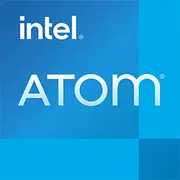Intel Atom x7809C

The Intel Atom x7809C processor is a powerful and efficient option for server platforms. With its 8 total cores and threads, this processor provides excellent multitasking capabilities for handling a variety of server workloads. The 10 nm technology ensures energy efficiency and performance optimization, making it a cost-effective choice for data centers and cloud computing applications.
With a base frequency of 2 GHz, the x7809C delivers reliable performance for everyday tasks, while the max turbo frequency of 3.6 GHz provides a significant boost for more demanding workloads. The 6 MB L3 cache allows for quick access to frequently used data, further enhancing the processor's speed and responsiveness.
One of the most impressive features of the x7809C is its low thermal design power (TDP) of 25W, which contributes to reduced power consumption and heat generation. This not only lowers operating costs but also allows for more compact server designs without sacrificing performance.
Overall, the Intel Atom x7809C processor stands out for its balance of performance, efficiency, and scalability, making it an excellent choice for server applications that require both power and energy savings.
Basic
Label Name
Intel
Platform
Server
Launch Date
April 2024
Model Name
?
The Intel processor number is just one of several factors - along with processor brand, system configurations, and system-level benchmarks - to be considered when choosing the right processor for your computing needs.
Atom x7809C
Code Name
Amston Lake
Foundry
Intel
Generation
Atom (Gracemont)
CPU Specifications
Total Cores
?
Cores is a hardware term that describes the number of independent central processing units in a single computing component (die or chip).
8
Total Threads
?
Where applicable, Intel® Hyper-Threading Technology is only available on Performance-cores.
8
Performance-core Base Frequency
2 GHz
Performance-core Max Turbo Frequency
?
Maximum P-core turbo frequency derived from Intel® Turbo Boost Technology.
3.6 GHz
L1 Cache
96 KB per core
L2 Cache
2 MB per module
L3 Cache
6 MB shared
CPU Socket
?
The socket is the component that provides the mechanical and electrical connections between the processor and motherboard.
Intel BGA 1264
Bus Frequency
100 MHz
Multiplier
20.0
Unlocked Multiplier
No
Technology
?
Lithography refers to the semiconductor technology used to manufacture an integrated circuit, and is reported in nanometer (nm), indicative of the size of features built on the semiconductor.
10 nm
TDP
25 W
PCIe Version
?
PCI Express is a high-speed serial computer expansion bus standard used for connecting high-speed components, replacing older standards such as AGP, PCI, and PCI-X. It has gone through multiple revisions and improvements since its initial release. PCIe 1.0 was first introduced in 2002, and in order to meet the growing demand for higher bandwidth, subsequent versions have been released over time.
3
Memory Specifications
Memory Type
?
Intel® processors come in four different types: Single Channel, Dual Channel, Triple Channel, and Flex Mode. Maximum supported memory speed may be lower when populating multiple DIMMs per channel on products that support multiple memory channels.
DDR4-3200, DDR5-4800
Max Memory Size
?
Max memory size refers to the maximum memory capacity supported by the processor.
32 GB
Memory Channels
?
The number of memory channels refers to the bandwidth operation for real world application.
1
Max Memory Bandwidth
?
Max Memory bandwidth is the maximum rate at which data can be read from or stored into a semiconductor memory by the processor (in GB/s).
38.4 GB/s
ECC Memory Support
No
GPU Specifications
Integrated Graphics Model
?
An integrated GPU refers to the graphics core that is integrated into the CPU processor. Leveraging the processor's powerful computational capabilities and intelligent power efficiency management, it delivers outstanding graphics performance and a smooth application experience at a lower power consumption.
N/A
Miscellaneous
PCIe Lanes
9
Share in social media
Or Link To Us
<a href="https://cputronic.com/en/cpu/intel-atom-x7809c" target="_blank">Intel Atom x7809C</a>